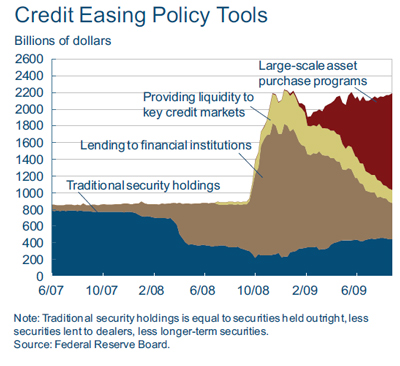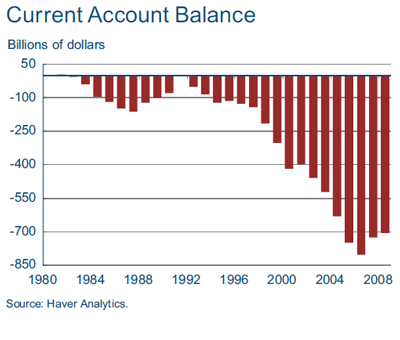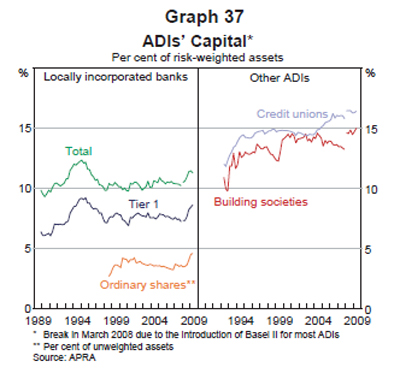Bank of England Governor Mervyn King had some apocalyptic things to say:
two British banks got within hours of a liquidity shortfall on Oct. 6, 2008, and the day after as the U.K. financial system came to the brink of collapse.
“Two of our major banks which had had difficulty in obtaining funding could raise money only for one week then only for one day, and then on that Monday and Tuesday it was not possible even for those two banks really to be confident they could get to the end of the day,” the BBC cited King as saying in an interview to be broadcast later today.
King was referring to Royal Bank of Scotland Group Plc and HBOS Plc, the BBC said. Prime Minister Gordon Brown’s government pledged to invest about 50 billion ($82 billion) pounds in the banking system on Oct. 8, 2008, to save it from meltdown in the aftermath of Lehman Brothers Holdings Inc.’s bankruptcy declared that September.
This meltdown-through-funding scenario ties in the the IMF conclusions on the resiliency of Canadian banks, but I confess that the entire mechanism of such a failure is somewhat opaque to me.
It was to prevent such crises of funding that Central Banking was invented; the Federal Reserve was created explicitly due to the funding difficulties that were at the centre of the panic of 1907 – so why should funding, in and of itself, be such a critical element?
This brings us back to the Northern Rock episode, where the announcement of liquidity support by the BoE actually made matters worse; I have previously speculated that this reflects public distrust of public institutions. If this is the case, then the fundamental assumptions of Central Banking will have to be revised – the discount window has been the most important tool in their box.
What? Public Institutions, civil servants and policitians at fault? Can’t be! It must be the fault of the Credit Rating Agencies:
Moody’s Investors Service, Standard & Poor’s and Fitch Ratings face scrutiny today by insurance regulators examining the role of the firms in evaluating fixed- income securities.
State insurance regulators are meeting in Maryland to examine the firms’ role in rating bonds held by insurance companies. A second hearing scheduled today, by Edolphus Towns, chairman of the House Oversight and Government Reform Committee, was postponed to Sept. 30. The panel will look at ratings companies amid allegations of continued conflicts of interest from a former Moody’s analyst.
…
“The fundamental issue is if the bar is always moving, that makes it very difficult,” Connecticut insurance Commissioner Thomas Sullivan said in a telephone interview. “Magically overnight, what we thought was AAA is no longer AAA. That’s a big problem.”
Assiduous Readers will remember that actual market participants felt that a volatility scale would be a good adjunct to ratings, but this solution was disdained by regulators. Of some interest in the Bloomberg story was:
Moody’s originally declined to participate in the [NAIC] meeting but relented after New York’s regulator suggested scaling back the rating firm’s authorization if it skipped the session.
Congressional Hearing
The congressional hearing was postponed after the panel obtained an internal Moody’s staff memo written by Eric Kolchinsky, a former analyst at the firm, expressing his concern with how the company rated securities, said committee chairman Edolphus Towns. The panel didn’t have enough time to incorporate the information into the hearing, he said.
A Moody’s representative was invited to the session but didn’t come, Towns said.
“They basically didn’t show up, they ignored us” Towns said in an interview, referring to Moody’s. “I guess they didn’t realize we have subpoena power.”
See? Congressional sessions have subpoena power, but regulators have something even better: extortion.
The Fed has released the Shared National Credits Report:
Credit quality declined sharply for loan commitments of $20 million or more held by multiple federally supervised institutions, according to the 32nd annual review of Shared National Credits (SNC).
The credit risk of these large loan commitments was shared among U.S. bank organizations, foreign bank organizations (FBO), and nonbanks such as securitization pools, hedge funds, insurance companies, and pension funds. Credit quality deteriorated across all entities, but nonbanks held 47 percent of classified assets in the SNC portfolio, despite making up only 21.2 percent of the SNC portfolio. U.S. bank organizations held 30.2 percent of the classified assets and made up 40.8 percent of the SNC portfolio.
The 2009 review covered 8,955 credits totaling $2.9 trillion extended to approximately 5,900 borrowers. Loans were reviewed and categorized by the severity of their risk–special mention, substandard, doubtful, or loss–in order of increasing severity. The lowest risk loans, special mention, had potential weaknesses that deserve management attention to prevent further deterioration at the time of review. The most severe category of loans, loss, includes loans that were considered uncollectible.
Treasury’s wish-list of bank capitalization rules included many references to Tier 1 Financial Holding Companies, a concept I criticized – special status will only cause problems, I said. It would seem that Paul Volcker agrees:
Former Federal Reserve Chairman Paul Volcker criticized the Obama administration’s plan to subject “systemically important” financial firms to more stringent regulation by the Fed.
Volcker told lawmakers today that such a designation would imply government readiness to support the firms in a crisis, encouraging even more risky behavior in a phenomenon known as “moral hazard.”
…
“The danger is the spread of moral hazard could make the next crisis much bigger,” said Volcker, who serves as an outside economic adviser to Obama. Volcker has criticized key elements of the Obama administration regulatory plan in recent public statements, and his remarks today largely reprised those criticisms.
I am particularly impressed by his reference to the next crisis … it is rare to fin a figure with any political clout not subscribing to the view that the New Millennium will arrive as soon as we get those pesky Credit Rating Agencies under control.
Good volume, soft returns in the preferred market today, with PerpetualDiscounts down 11bp on the day while FixedResets lost 8bp. This may be related to all the new issuance … there are, presumably, people still selling to make room for the monster TRP FixedReset settling September 30 and there was a (long awaited) new straight issue announced by GWO.
HIMIPref™ Preferred Indices
These values reflect the December 2008 revision of the HIMIPref™ Indices
Values are provisional and are finalized monthly |
| Index |
Mean
Current
Yield
(at bid) |
Median
YTW |
Median
Average
Trading
Value |
Median
Mod Dur
(YTW) |
Issues |
Day’s Perf. |
Index Value |
| Ratchet |
0.00 % |
0.00 % |
0 |
0.00 |
0 |
-0.0154 % |
1,512.7 |
| FixedFloater |
5.78 % |
4.02 % |
52,244 |
18.56 |
1 |
-0.7384 % |
2,657.7 |
| Floater |
2.42 % |
2.08 % |
34,569 |
22.25 |
4 |
-0.0154 % |
1,889.8 |
| OpRet |
4.87 % |
-8.94 % |
131,494 |
0.10 |
15 |
-0.4748 % |
2,287.6 |
| SplitShare |
6.42 % |
6.80 % |
875,320 |
4.01 |
2 |
0.0000 % |
2,061.2 |
| Interest-Bearing |
0.00 % |
0.00 % |
0 |
0.00 |
0 |
-0.4748 % |
2,091.8 |
| Perpetual-Premium |
5.77 % |
5.69 % |
150,864 |
2.82 |
12 |
0.0462 % |
1,878.2 |
| Perpetual-Discount |
5.73 % |
5.77 % |
203,404 |
14.24 |
59 |
-0.1070 % |
1,799.0 |
| FixedReset |
5.50 % |
4.04 % |
459,882 |
4.05 |
40 |
-0.0805 % |
2,109.3 |
| Performance Highlights |
| Issue |
Index |
Change |
Notes |
| BAM.PR.O |
OpRet |
-2.10 % |
YTW SCENARIO
Maturity Type : Option Certainty
Maturity Date : 2013-06-30
Maturity Price : 25.00
Evaluated at bid price : 25.70
Bid-YTW : 4.20 % |
| CM.PR.K |
FixedReset |
-1.70 % |
YTW SCENARIO
Maturity Type : Call
Maturity Date : 2019-08-30
Maturity Price : 25.00
Evaluated at bid price : 25.50
Bid-YTW : 4.74 % |
| BAM.PR.I |
OpRet |
-1.62 % |
YTW SCENARIO
Maturity Type : Call
Maturity Date : 2011-07-30
Maturity Price : 25.25
Evaluated at bid price : 25.58
Bid-YTW : 4.69 % |
| TD.PR.N |
OpRet |
-1.51 % |
YTW SCENARIO
Maturity Type : Call
Maturity Date : 2010-05-30
Maturity Price : 25.75
Evaluated at bid price : 26.15
Bid-YTW : 3.16 % |
| CM.PR.R |
OpRet |
-1.45 % |
YTW SCENARIO
Maturity Type : Call
Maturity Date : 2009-10-24
Maturity Price : 25.60
Evaluated at bid price : 25.61
Bid-YTW : -1.60 % |
| GWO.PR.H |
Perpetual-Discount |
-1.44 % |
YTW SCENARIO
Maturity Type : Limit Maturity
Maturity Date : 2039-09-24
Maturity Price : 20.55
Evaluated at bid price : 20.55
Bid-YTW : 5.94 % |
| GWO.PR.I |
Perpetual-Discount |
-1.08 % |
YTW SCENARIO
Maturity Type : Limit Maturity
Maturity Date : 2039-09-24
Maturity Price : 19.31
Evaluated at bid price : 19.31
Bid-YTW : 5.86 % |
| ELF.PR.F |
Perpetual-Discount |
1.09 % |
YTW SCENARIO
Maturity Type : Limit Maturity
Maturity Date : 2039-09-24
Maturity Price : 21.25
Evaluated at bid price : 21.25
Bid-YTW : 6.37 % |
| CU.PR.A |
Perpetual-Premium |
1.15 % |
YTW SCENARIO
Maturity Type : Call
Maturity Date : 2012-03-31
Maturity Price : 25.00
Evaluated at bid price : 25.50
Bid-YTW : 5.14 % |
| HSB.PR.D |
Perpetual-Discount |
1.39 % |
YTW SCENARIO
Maturity Type : Limit Maturity
Maturity Date : 2039-09-24
Maturity Price : 21.50
Evaluated at bid price : 21.82
Bid-YTW : 5.74 % |
| Volume Highlights |
| Issue |
Index |
Shares
Traded |
Notes |
| NA.PR.O |
FixedReset |
105,150 |
RBC crossed 15,000 at 27.74; Anonymous crossed (? Possibly not the same anonymous) 40,000 at 27.82 then another (?) 39,900 at 27.89 (possibly not the same two anonymice).
YTW SCENARIO
Maturity Type : Call
Maturity Date : 2014-03-17
Maturity Price : 25.00
Evaluated at bid price : 27.75
Bid-YTW : 4.12 % |
| MFC.PR.D |
FixedReset |
97,275 |
Desjardins crossed 44,500 at 28.05; Nesbitt crossed 30,000 at 28.00.
YTW SCENARIO
Maturity Type : Call
Maturity Date : 2014-07-19
Maturity Price : 25.00
Evaluated at bid price : 27.99
Bid-YTW : 3.93 % |
| BAM.PR.K |
Floater |
68,750 |
Desjardins crossed 55,000 at 13.40.
YTW SCENARIO
Maturity Type : Limit Maturity
Maturity Date : 2039-09-24
Maturity Price : 13.28
Evaluated at bid price : 13.28
Bid-YTW : 2.96 % |
| BMO.PR.O |
FixedReset |
64,870 |
RBC crossed 15,000 at 28.01 and sold 20,000 to anonymous at 28.10.
YTW SCENARIO
Maturity Type : Call
Maturity Date : 2014-06-24
Maturity Price : 25.00
Evaluated at bid price : 28.01
Bid-YTW : 3.88 % |
| TD.PR.K |
FixedReset |
54,200 |
National crossed 30,000 at 27.82.
YTW SCENARIO
Maturity Type : Call
Maturity Date : 2014-08-30
Maturity Price : 25.00
Evaluated at bid price : 27.74
Bid-YTW : 4.04 % |
| TD.PR.O |
Perpetual-Discount |
48,916 |
YTW SCENARIO
Maturity Type : Limit Maturity
Maturity Date : 2039-09-24
Maturity Price : 22.23
Evaluated at bid price : 22.37
Bid-YTW : 5.50 % |
| There were 58 other index-included issues trading in excess of 10,000 shares. |


